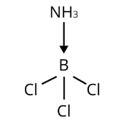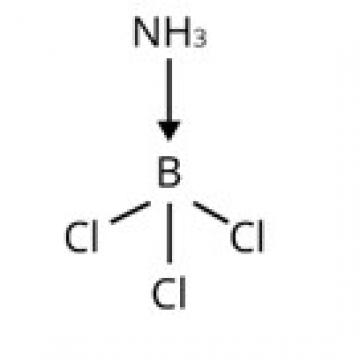Chemistry NCERT Exemplar Solutions Class 11th Chapter Eleven
Get insights from 115 questions on Chemistry NCERT Exemplar Solutions Class 11th Chapter Eleven, answered by students, alumni, and experts. You may also ask and answer any question you like about Chemistry NCERT Exemplar Solutions Class 11th Chapter Eleven
Follow Ask QuestionQuestions
Discussions
Active Users
Followers
New answer posted
5 months agoContributor-Level 10
This is a Short Answers Type Questions as classified in NCERT Exemplar
H3BO3
Boric acid forms a hexagon and rings through hydrogen bonding and has a layer-like structure.
Boric acid is present in water as [B (OH)4]−.H3BO3 electron from the OH of water and forms the complex BOH for negative for sp3 and is present in sp3 hybridisation.
Reaction:
B (OH)3+2H2O→ [B (OH)4]− + H3O+

New answer posted
5 months agoContributor-Level 10
This is a Short Answers Type Questions as classified in NCERT Exemplar
H3BO3 or B (OH)3 is an electron deficient compound or Lewis acid which easily accepts electron from OH of water and releases its proton hence it is a Monobasic acid.
Reaction:
B (OH)3 + 2H2O → [B (OH)4]− + H3O+
New answer posted
5 months agoContributor-Level 10
This is a Short Answers Type Questions as classified in NCERT Exemplar
The central B atom in BCl3 has six electrons in its valence shell. As a result, it is an electron-deficient molecule in need of two more electrons to complete its octet. To put it another way, BCl3 acts as a Lewis acid. NH3 on the other hand, has a lone pair of electrons that it can easily donate. As a result, NH3 serves as a Lewis base. As shown below, the Lewis acid (BCl3) and Lewis base (NH3) combine to form an adduct:

The valence shell of AlCl3 contains six electrons. As a result, it is an electron-deficient molecule that requires two additional electrons to compl
New answer posted
5 months agoContributor-Level 10
This is a Long Answers Type Questions as classified in NCERT Exemplar
2C (s) + O2 + 4N2 (g) ![]() 2CO (g) + 4N2 ( g)
2CO (g) + 4N2 ( g)
Fe2O3 (S)+3CO (g) ![]() 2Fe (S)+3CO2
2Fe (S)+3CO2
C= tetravalent carbon
CO= carbon monoxide
Fe2O3= ferric oxide
CO2= carbon dioxide
Tetravalent elements i.e. carbon combines with oxygen to produce carbon monoxide. The reaction occurs at high temperatures and in the presence of nitrogen gas, which acts as a producer gas only. It is not consumed in the reaction. The carbon monoxide formed acts as a reducing agent for ferric oxide, reduces the oxidation state of iron from +3 to zero, and oxidiz
New answer posted
5 months agoContributor-Level 10
This is a Long Answers Type Questions as classified in NCERT Exemplar
Boron is the only non-metallic and extremely hard element in group 13, and it is also used to make bulletproof vests. Boron exists in a variety of allotropic forms. It usually has a high melting point and no d orbital. Using 2s and 2p orbitals, it can achieve a maximum covalency of 4 . Because the octet of boron is not completed in trivalent halides of boron, it acts as Lewis acid. It forms an adduct when it reacts with Lewis base.
BF3+NH3→H3N−B−F3
New answer posted
5 months agoContributor-Level 10
This is a Long Answers Type Questions as classified in NCERT Exemplar
B2H6 + 2NMe3→ 2BH3NMe3 BH3NMe3+H2O → H3BO3 + NMe3 + 6H2
(A) (B) (C)
(A): B2H6
(B): 2BH3NMe3
(C): H3BO3
New answer posted
5 months agoContributor-Level 10
This is a Long Answers Type Questions as classified in NCERT Exemplar
(i) Organosilicon polymers having (R2SiO2) as monomer units are called silicones. Silicones contain organic side groups which surround it giving alkane like nature and makes it hydrophobic. Silicones are applicative in electrical insulators, water proofing, sealant. They have been utilized in the biological field in cosmetic implants and other surgeries.
(ii) Boranes correspond to alkane-like compounds of boron. They consist of boron and hydrogen. Most common borane existing is dibecane.
4BF3 + 3LiAlH4?2B2H6 + 3LiF + 3AIF3
New answer posted
5 months agoContributor-Level 10
This is a Long Answers Type Questions as classified in NCERT Exemplar
In BF3, due to n−pπ back bonding between the vacant p-orbital of boron and filled p-orbital of fluorine. This Π− pπ back bonding is absent in case of hydrogen as it is a single electron element.
Two BH3 molecules dimerise to form diborane.
In B2H6 There are two types of hydrogens present.
(I) Four hydrogens that are terminally bonded to each of two boron atoms.
(II) Two hydrogens that are bonded to both boron atoms forming a bridge in between.
The four terminal hydrogen atoms and two boron atoms lie in the same plane while bridging hydrogen lies in a plane perpend
New answer posted
5 months agoContributor-Level 10
This is a Long Answers Type Questions as classified in NCERT Exemplar
Both the compounds, BCl3 and AlCl3 are electron deficient compounds. In BCl3, boron is smaller in size and cannot assemble four big chlorine atoms near it causing steric hindrance and making it unstable.
Hence, BCl3 exists as a monomer only.
In AlCl3, aluminum has 3p-orbitals through which chlorine atoms can be accommodated easily to complete its octet and dimer is formed.

New answer posted
5 months agoContributor-Level 10
(i) TlCl is more stable than TlCl3, due to inert pair effect, +1 oxile. oxidation state.
(ii) AlCl3, Al3+ is more stable than aluminum ions in +1 state.
(iii) Due to the inert pair effect, +1 oxidation state is more stable than the +3 oxidation state. So, InCl is more stable than InCl3.
(iv) Boranes correspond to alkane-like compounds of boron. They consist of boron and hydrogen. Most common borane existing is dibecane.
4BF3 + 3LiAlH4?2B2H6 + 3LiF + 3AIF3
Taking an Exam? Selecting a College?
Get authentic answers from experts, students and alumni that you won't find anywhere else
Sign Up on ShikshaOn Shiksha, get access to
- 65k Colleges
- 1.2k Exams
- 682k Reviews
- 1800k Answers

